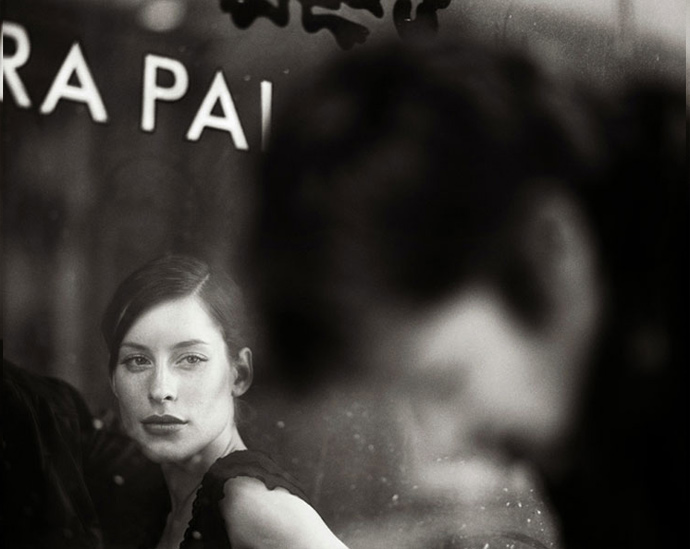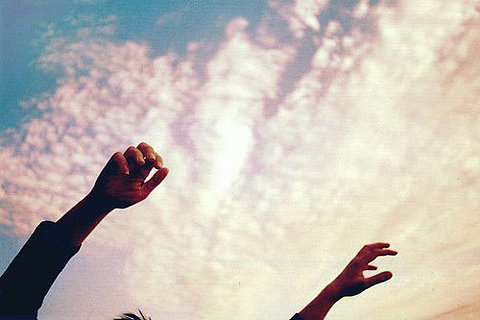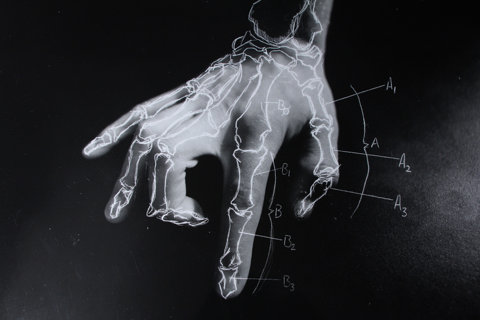(talk delivered on retreat, March 5, 2016)
When a person attains realization, it is like the moon reflecting on the water. The moon never becomes wet; the water is never destroyed. Although it is a vast and great light, it reflects itself on a small amount of water. The whole moon and even the whole sky reflects on even a drop of dew on a blade of grass, or a single tiny drop of water. Realization does not destroy the person, as the moon does not make a hole in the water. The person does not obstruct realization, as a drop of dew does not obstruct the moon in the sky. Dogen’s Genjo-koan lecture
The moon is a common symbol in Zen of an embodied understanding of emptiness. The moon is not actually part of the water, you can’t fish it out but it is also right there.
The Fourth Ancestor of Chinese Zen, Doshin (Daoxin, 580-651), after giving instruction for zazen practice, said: Days and nights, in walking, standing still, sitting and laying down, if you always contemplate in this way, you will know that your own body is like the moon in water, the reflection in a mirror, the heat waves in a hot day, the echo in the empty valley. You cannot say it is a being (u) because even if you try to catch it you cannot see its substance. You cannot say it is non-being (mu) either because it is clearly in front of your eyes.
It is the truth of our experience but it is not there in a solid or enduring way
The wisdom, the enlightenment do not become ours, even if we are experiencing them. we cannot grasp them. grasping, just like stirring the surface of the water, fragments the appearance of the moon but does not destroy it.
What we wake up to is not some thing. We wake up to relationship. The relationship of the moon to water, of the echo to the empty valley, to the heat waves on a hot day, the reality of how my body responds to you in this moment. These things are all ephemeral, impermanent. Neither being nor non-being.
How do we remember these relationships from what seems like a separate, atomized self? How do “I” step back into the web of natural world relationships. This “I” is an organism which is both a nest containing innumerable organisms and also nested within a larger organism. It is simply an idea that “I” am self-contained or separate in any real way.
It is a way of looking.
When I confront a human as my You and speak the basic words “I-You” to him, then he is no thing among things nor does he consist of things.
Neighbourless and seamless, he is You and fills the firmament. Not as if there were nothing but he; but everything else lives in His light. (I and Thou by Martin Buber)
The way I am right now is impacted by the way you are right now. If you weren’t here, I would be different. I can’t even say how. In this mode, I play a part in however you are.
The human being to whom I say You I do not experience, but I stand in relation to. Only when I step out of this do I experience him again. Experience is remoteness from You. (I and Thou by Martin Buber) where you become an it about whom I have all sorts of ideas
You is more than It knows. You does more, and more happens to it, than It knows. No deception reaches this far: here is the cradle of actual life. (I and Thou by Martin Buber) The mind will never know what the heart has forgotten. Direct experience meets the world in a way that the conceptual mind can’t.
Two Truths
How things appear and how things are. Dual and non-dual. Non-dual moves away from conceptual thought – my heart and my body are not separate. I can’t take my heart out of my body and see it by itself, the naming of “heart” as if it is separate from this body, is only an idea.
The Truth of Emptiness is interconnectedness. Everything is a part of something else.
The Truth of the Expedient: that each and every thing exists as an expedient and temporal collection of infinite different causes and conditions. Nothing exists without a relationship to something else. So when other things change, the one thing has to change. The point here is there are things that are a collection of causes and conditions and that exist as temporal and expedient beings such as Shohaku. (Shohaku Okumura)
We hold this tension between the appearance of things and the immanent interconnection between all things. Both are true.
Paradox. The mind can’t figure it out.
Yoga philosophy says the mind has two functions: chopping things up into smaller pieces and putting things together.
The mind is an organizer. Notice how you look. The mind seems hardwired to organize the visual field into name and form. Nama rupa.
Dogen’s writing seems to ask if we could practice seeing beyond seeing?
When you sail out in a boat to the middle of an ocean where no land is in sight, and view the four directions, the ocean looks circular, and does not look any other way. But the ocean is neither round nor square; its features are infinite in variety. It is like a palace. It is like a jewel. It only looks circular as far as you can see at that time. All things are like this. (Genjo koan)
Heavenly beings see it this way, fish see it that way. Where is the truth? Is truth just an idea we superimpose onto ocean? We are back into the paradox of the two truths. This moment has its own truth for each of us, but it arises, as with all things, in conditions, and passes and changes with all other phenomena. It is ephemeral. Is it possible to see beyond certainty? To recognize the mind’s proclivity to stepping in and making rules and permanence where there is only change.
The invitation is to settle into steady and immovable sitting. Think of not thinking. Not thinking: what kind of thinking is that? Non-thinking. This is the essential art of zazen.
The zazen I speak of is not meditation practice. It is simply the dharma gate of joyful ease, the practice-realization of totally culminated enlightenment. Dogen (Fukanzazengi)
To think non-thinking. Right there, it seizes the mind, let go of opposites. Let go of dualism. Let go of non-dualism. Don’t try to think and don’t try not to think. One step in either direction and you’ve missed the mark.
Right here, there is nowhere for the mind to go, so when it is held right here, right now, it can let go. Of knowing, judging, comparing.
To have totally culminated realization – Dogen says you don’t have to do anything. It is only right here, right now. So we just sit with joyful ease, and that includes pain.
Dogen’s innovation: to practice realization. There is nowhere else to go to find liberation, it is just right now and couldn’t be anywhere outside of this moment.
By practicing realization we manifest realization. It’s a radical kind of doing non-doing.
Zen Master Anzan Hoshin says it this way: We cannot be anything that we are aware of. We are always the context of whatever content arises. When we release all of our states and our avoidance and identification then we are right there at the very moment that the world arises, right at this pointless point. This is the zazen of all Awakened Ones.
It is not somewhere else. It is always and only ever right here, right now. A hairsbreadth deviation and it is as far as heaven from earth. (Dogen, Fukanzazengi). It is nothing other than what is you at this moment, just another way of seeing. How can practice be another way of seeing? Of seeing beyond seeing?
Look now. Can you gaze beyond the point where the mind knows what it sees in order to simply let seeing happen? To open the hand of thought as Uchiyama Roshi says.
Don’t look to see something. Don’t look to not see something
Let the eyes be soft and receptive. Allow what is in the visual field to come to you. To carry yourself forward and experience myriad things is delusion. That myriad things come forth and experience themselves is awakening. (Genjokoan)
Can the visual field experience itself through these eyes that are seeing?
Jill Bolte Taylor is an American neuroanatomist, author, and inspirational public speaker. Her personal experience with a massive stroke, experienced in 1996 at the age of 37, and her subsequent eight-year recovery, influenced her work as a scientist and speaker. It is the subject of her 2006 book My Stroke of Insight, A Brain Scientist’s Personal Journey. She gave the first TED talk that ever went viral on the Internet. In it she describes her split between left brain and right brain during her stroke. She couldn’t distinguish her mother from the door frame, from the wall.
It would be problematic if we could not distinguish our mother from a wall. But we get trapped into believing the way we see. At an energetic level, this way of seeing might be quite true, mother and wall are separate and they are not separate. Dogen encourages us to explore the middle path: the path of emptiness. Emptiness of fixed or permanent truth, so we don’t discount what we see but recognize that as Dogen says, we grasp what our eye of study and practice can see.
When we listen to the reality of myriad things, we must know that there are inexhaustible characteristics in the both ocean and mountains, and there are many other worlds in the four directions. This is true not only in the external world, but also right under our feet or within a single drop of water. Genjokoan
Right under our cushions. Right in your own spine.
Can the body hear these teachings without the mind getting in the way? And if there is no separation between body and mind, what gets in the way? What separates us from this moment? Buddha said we cling to views: how things should or shouldn’t be. I want this to be special.
A teacher commented to me the other day that we don’t connect to others through the special. We connect in the ordinary, we connect through what is shared. Can we embrace this moment in all its the-way-it-is-ness? Or its “suchness” as is often said in Zen. Can we be with the moment fully as a moment without needing to be special? Nothing special. It’s not you. When it can be fully ordinary then it can be sacred and nothing special. Empty coming and empty going.
Right now, let the thighs feel the weight of the hands. Let the hands feel themselves. Smooth out the fabric on your thighs. Try it again but very slowly and see how much richness of experience can be included. Sensual experience might be pleasant, unpleasant or neither.
To study the buddha way is to study the self. To study the self is to forget the self. To forget the self is to be verified by all things. To be verified by all things is to let the body and mind of the self and the body and mind of others drop off. There is a trace of realization that cannot be grasped. We endlessly express this ungraspable trace of realization. Genjokoan
Expression is our lives. The dropping off is letting go our ideas of self and other. The I-it.
Practice invites kindness and curiosity and then forgetting the self can happen. Forgetting doesn’t mean getting rid of the self, but expanding the self until we see that it is also new and unfamiliar. There’s room for possibility and creativity in the way we respond to our lives.
The zazen I speak of is not meditation practice. It is simply the dharma gate of joyful ease, the practice-realization of totally culminated enlightenment. You don’t have to do anything, it’s already here. So give it everything you’ve got. Be curious, be gentle, pay attention.
Progress is not a matter of far or near,
but if you are confused (if you are stuck in your head), mountains and rivers block your way.
I respectfully urge you who study the mystery,
do not pass your days and nights in vain.
Sekito Kisen 8th Century from the Sandokai



